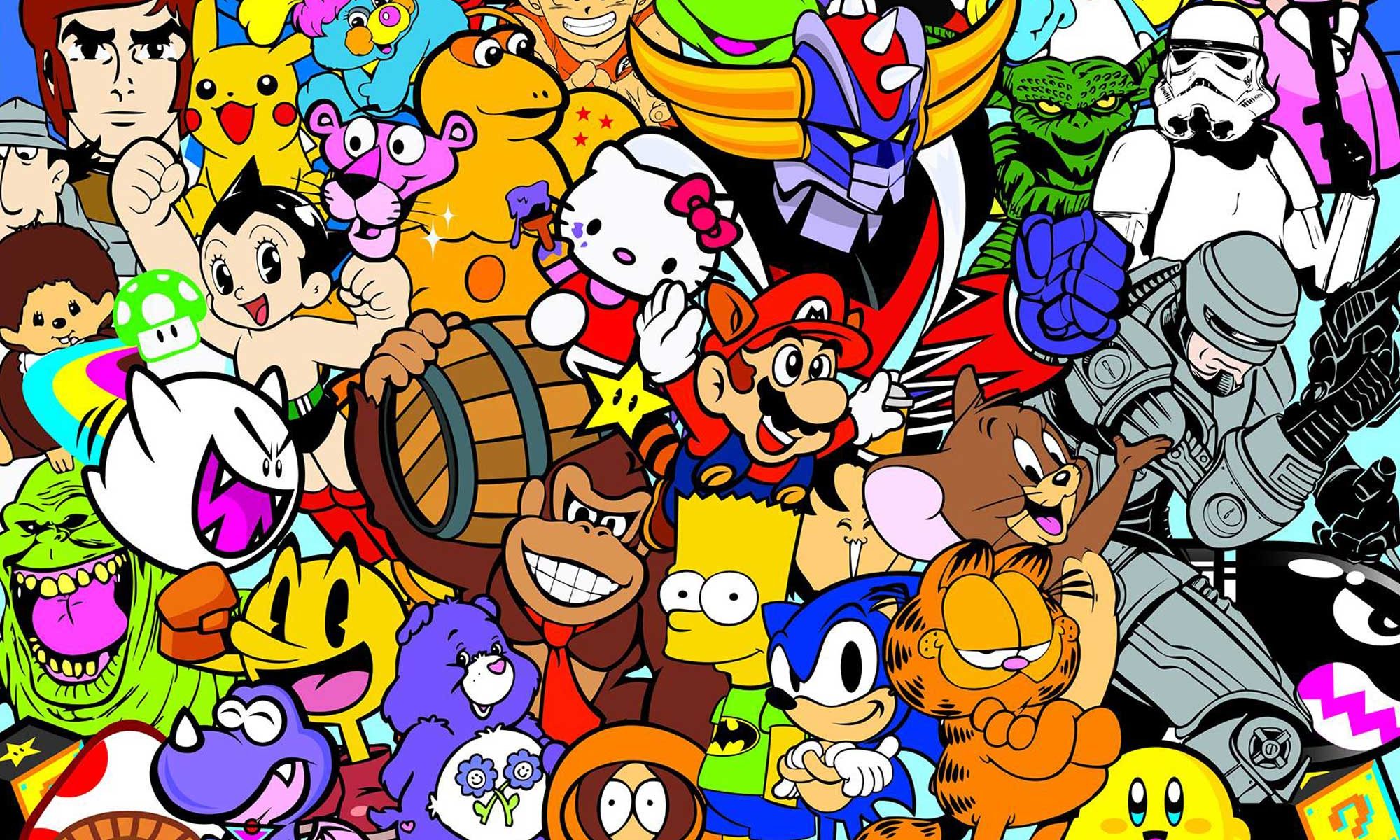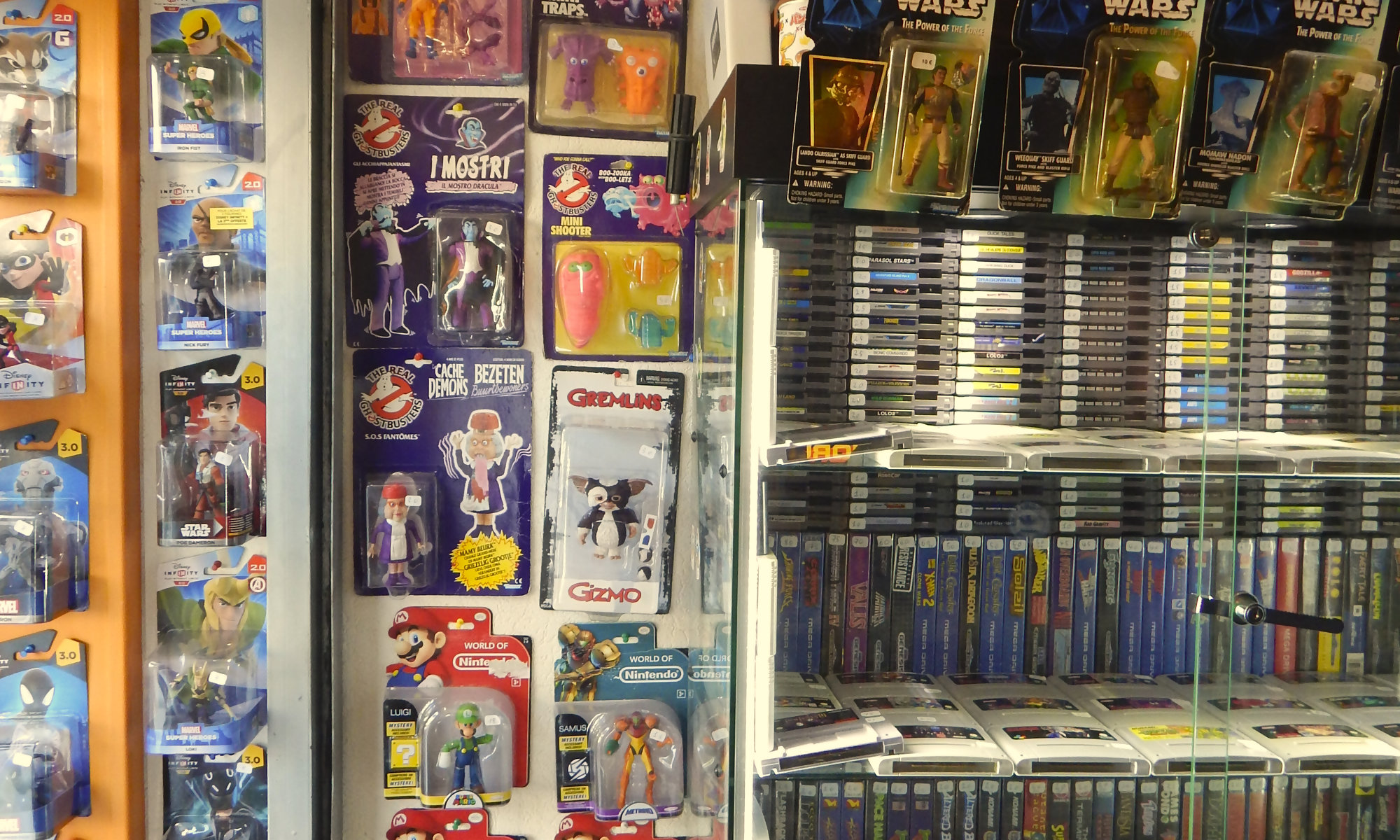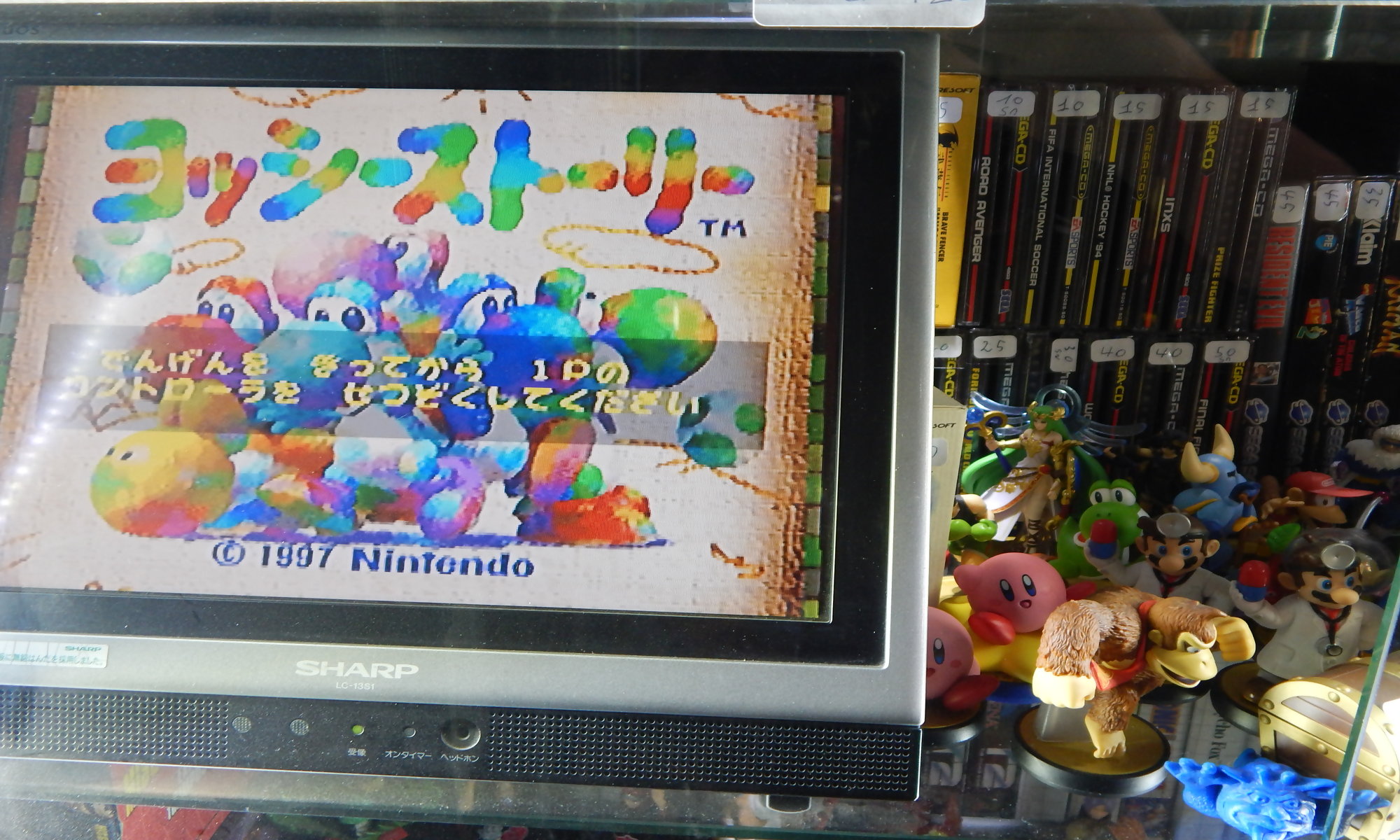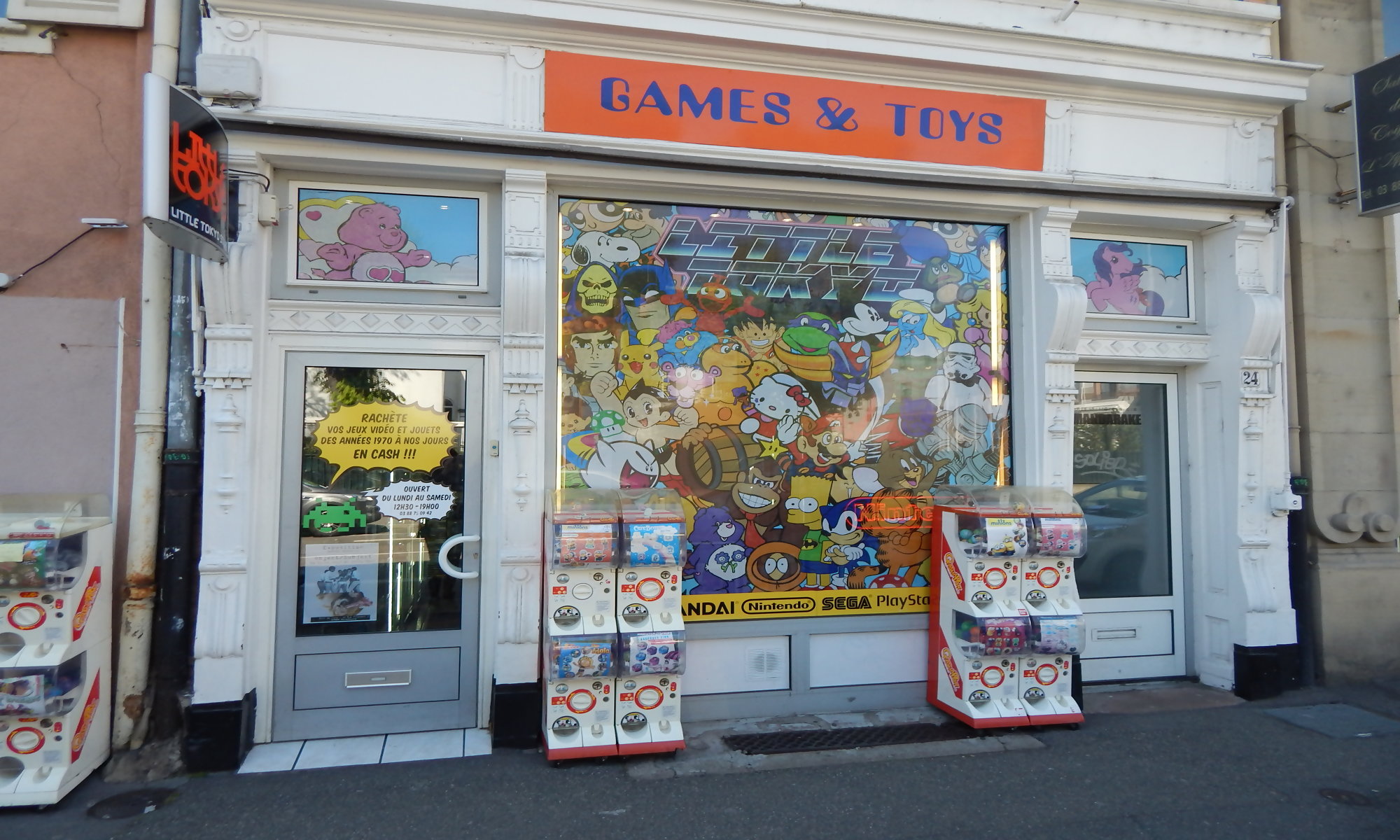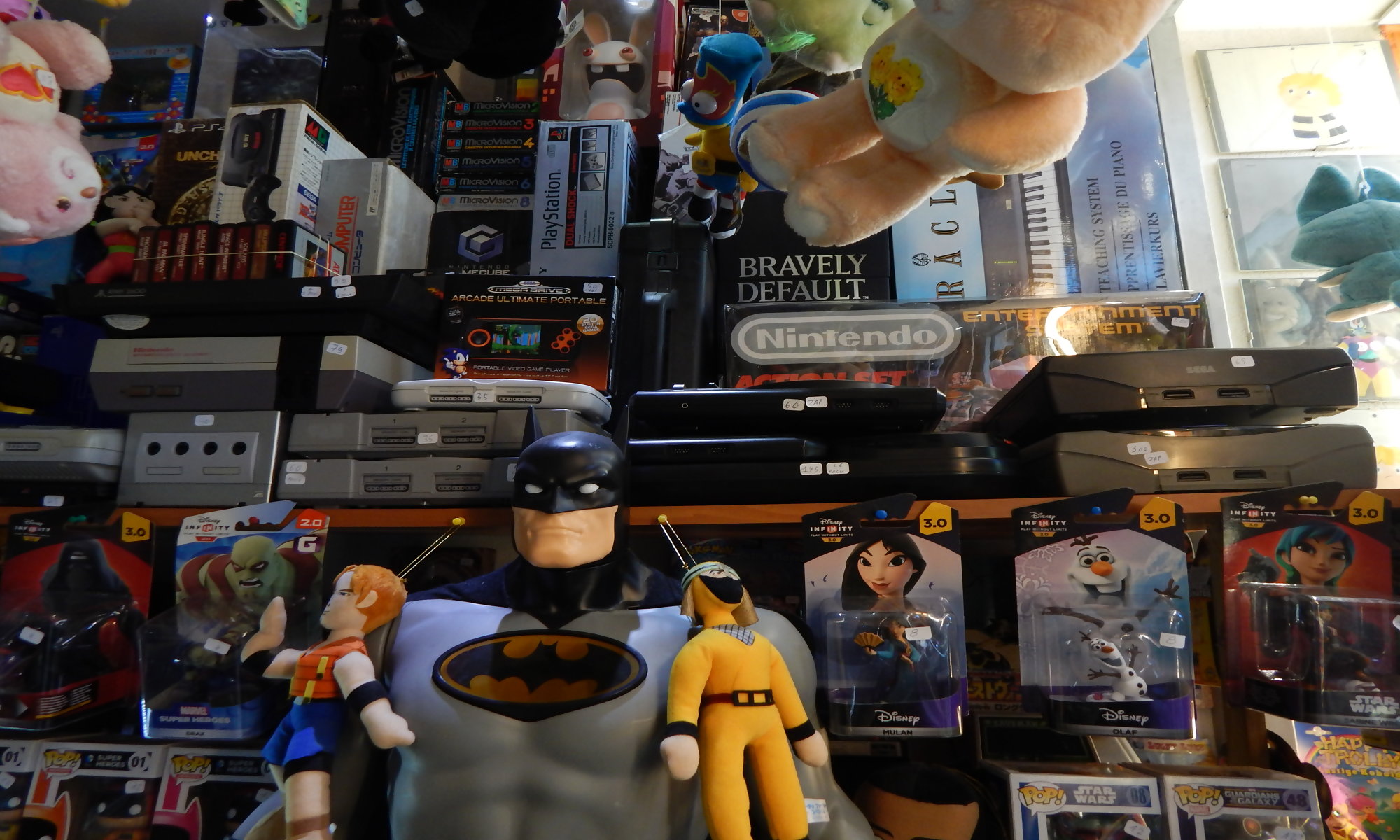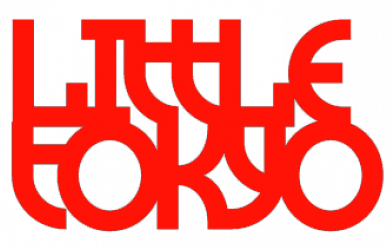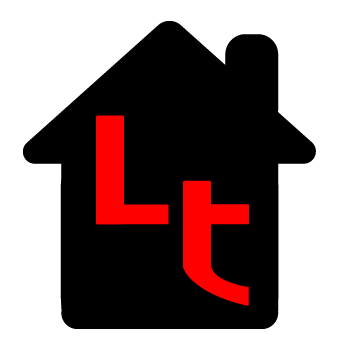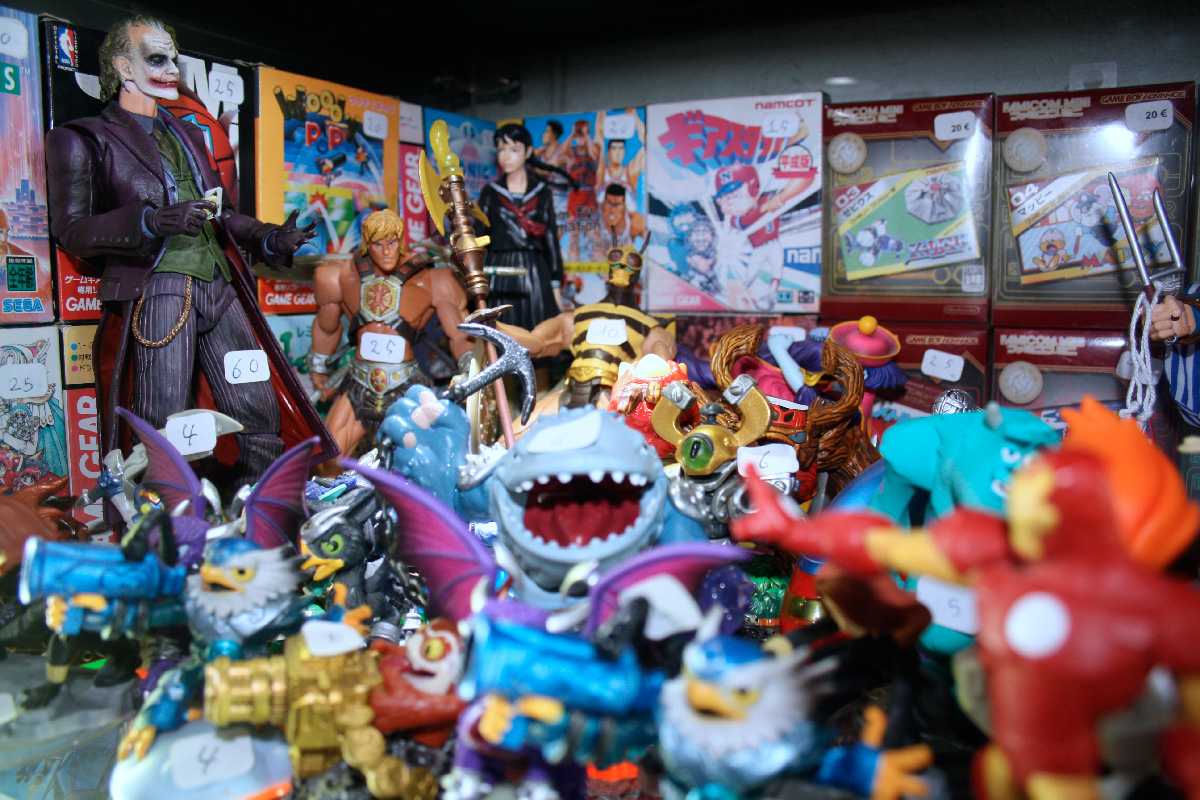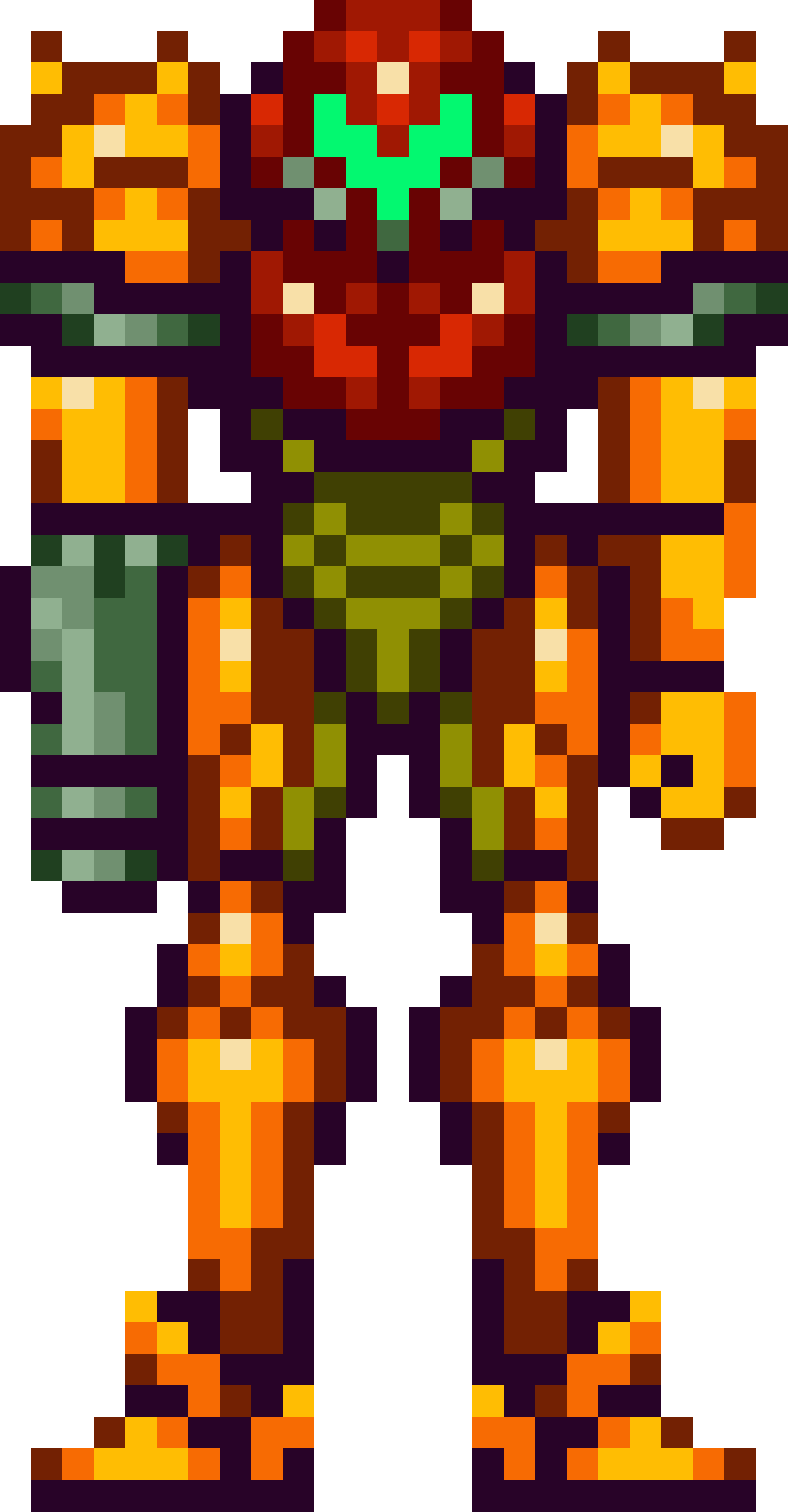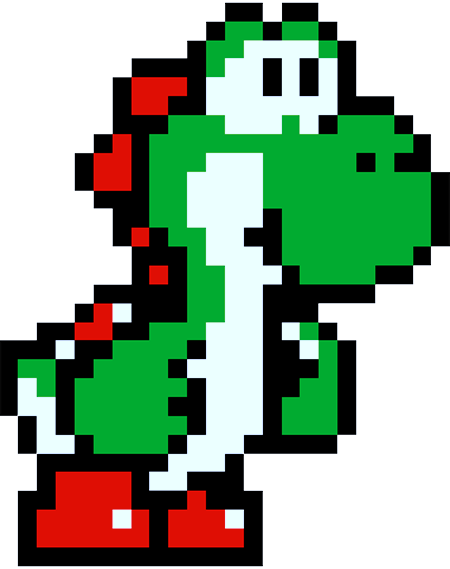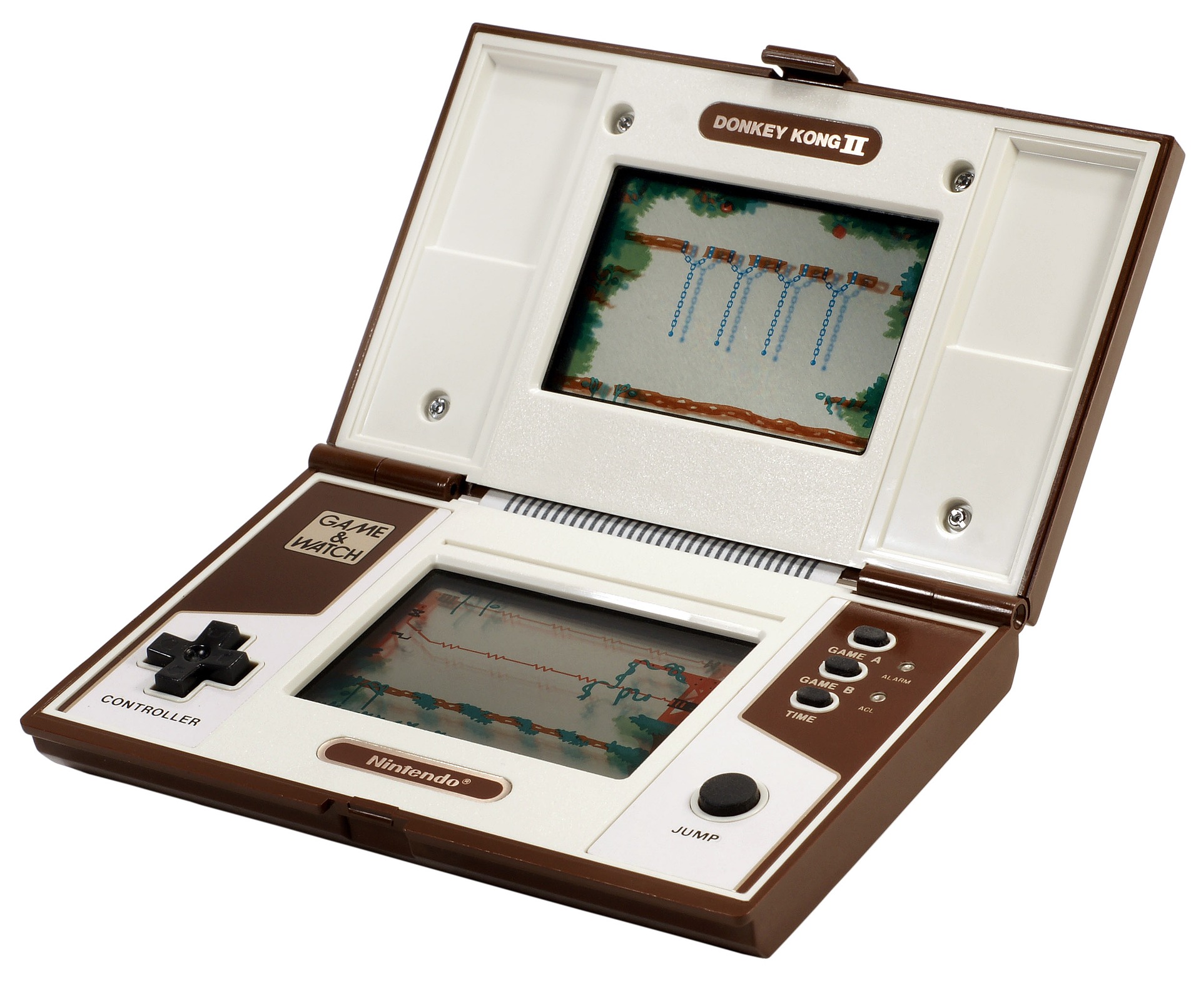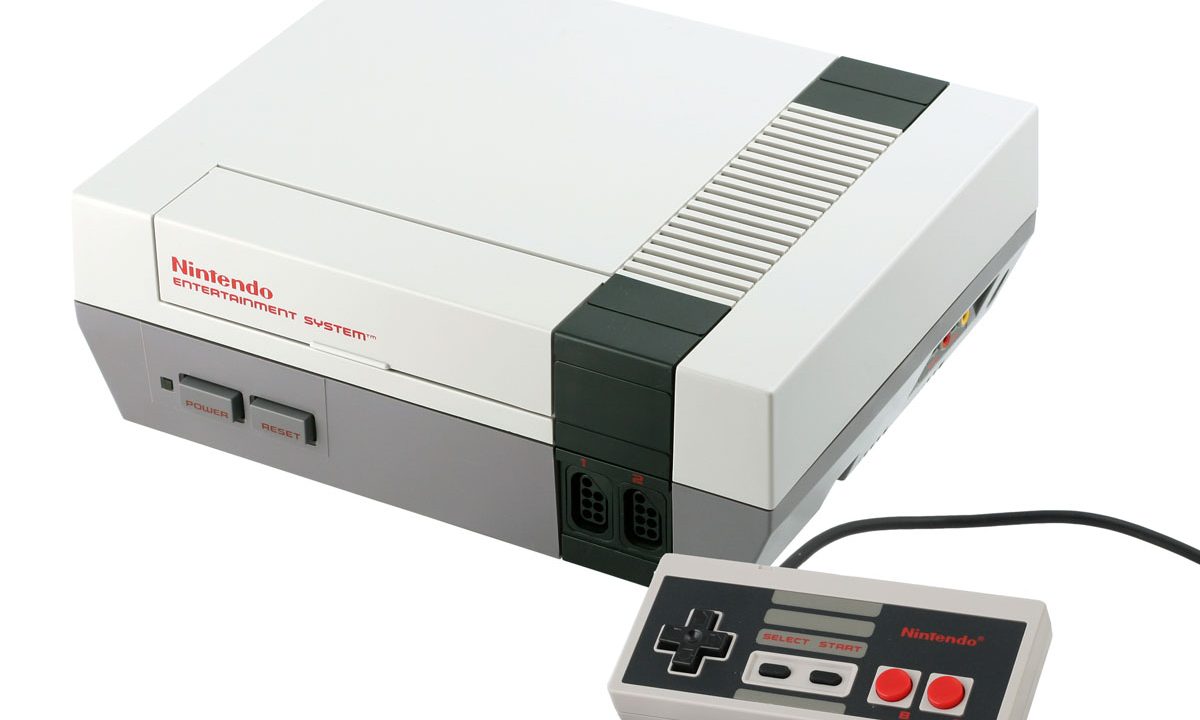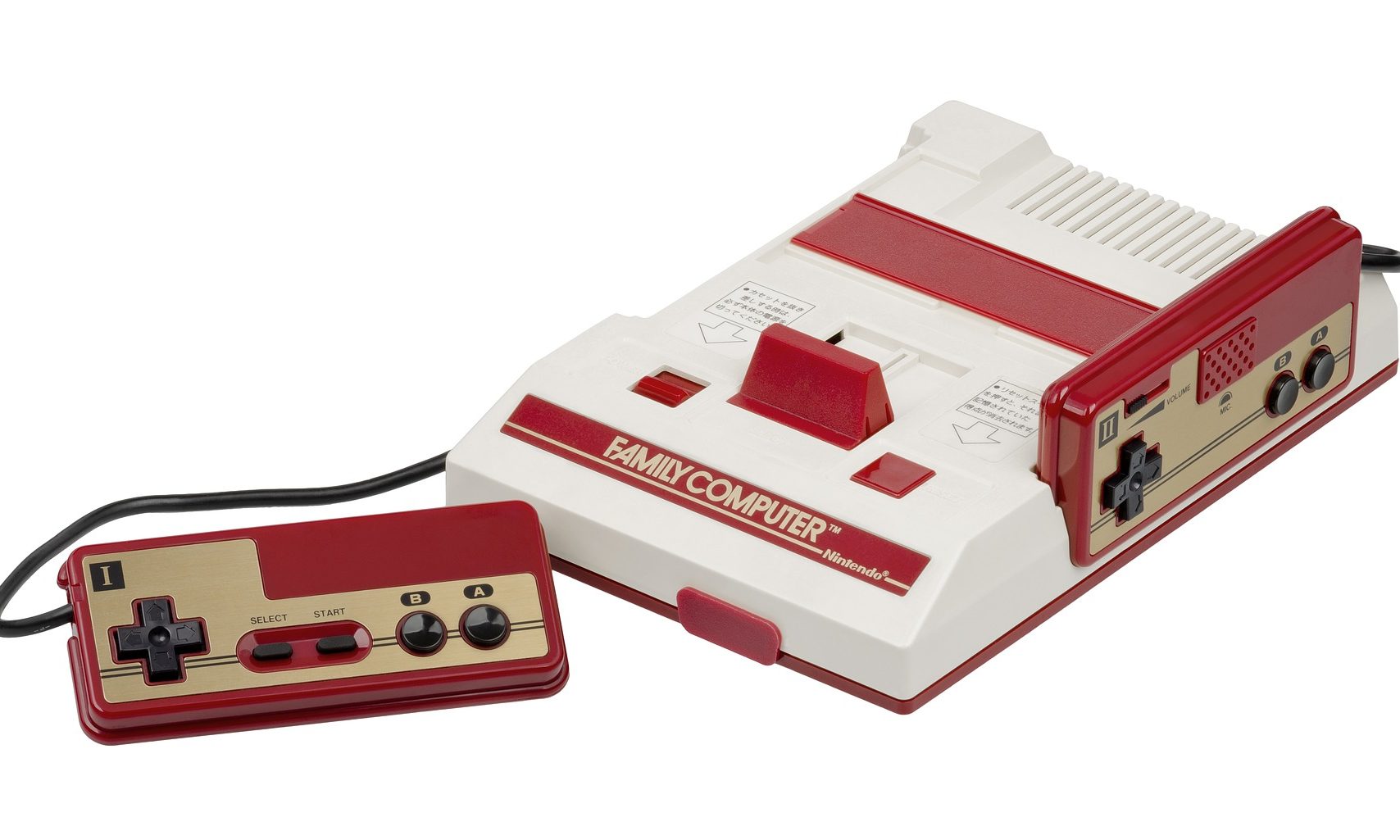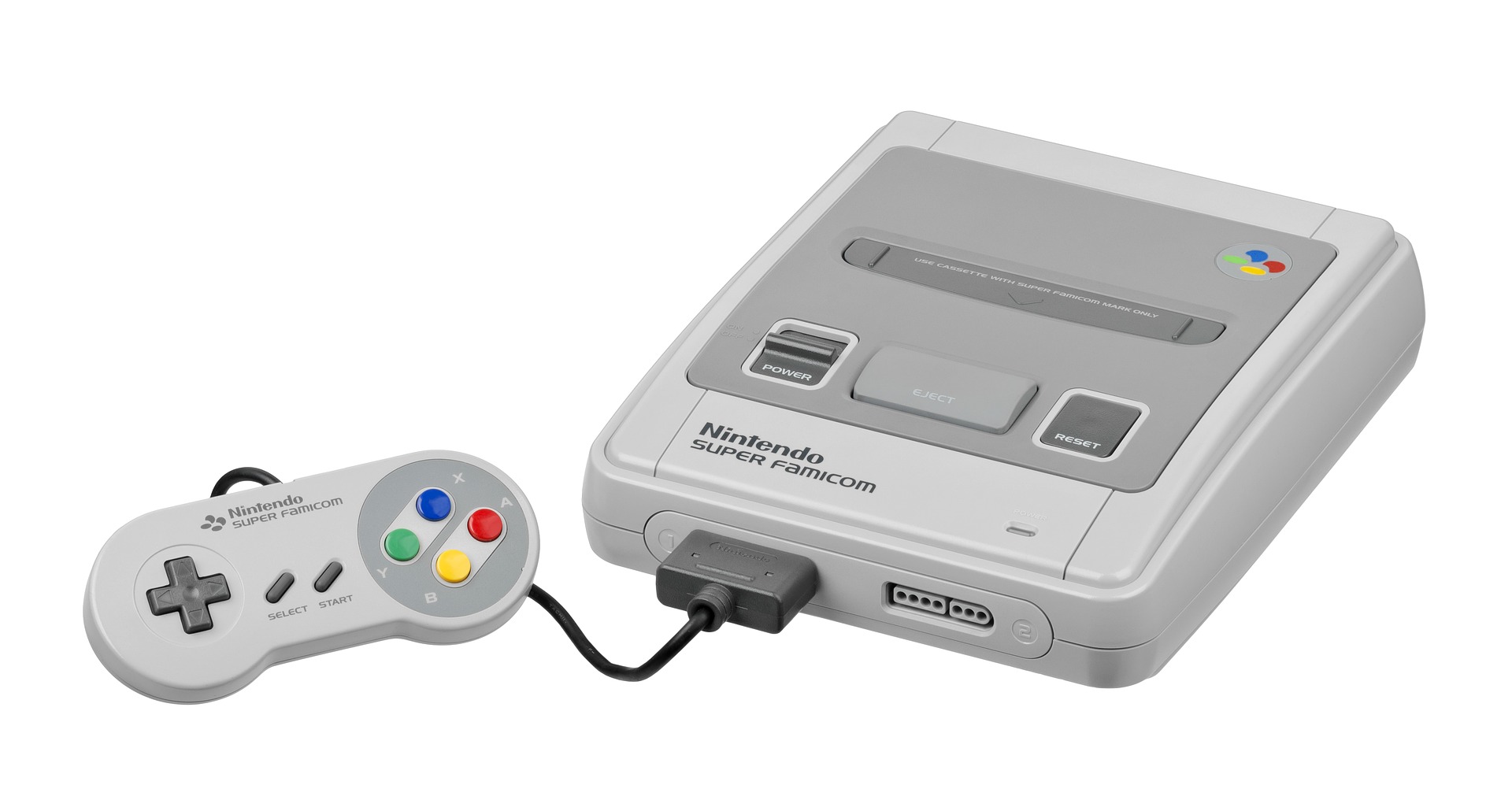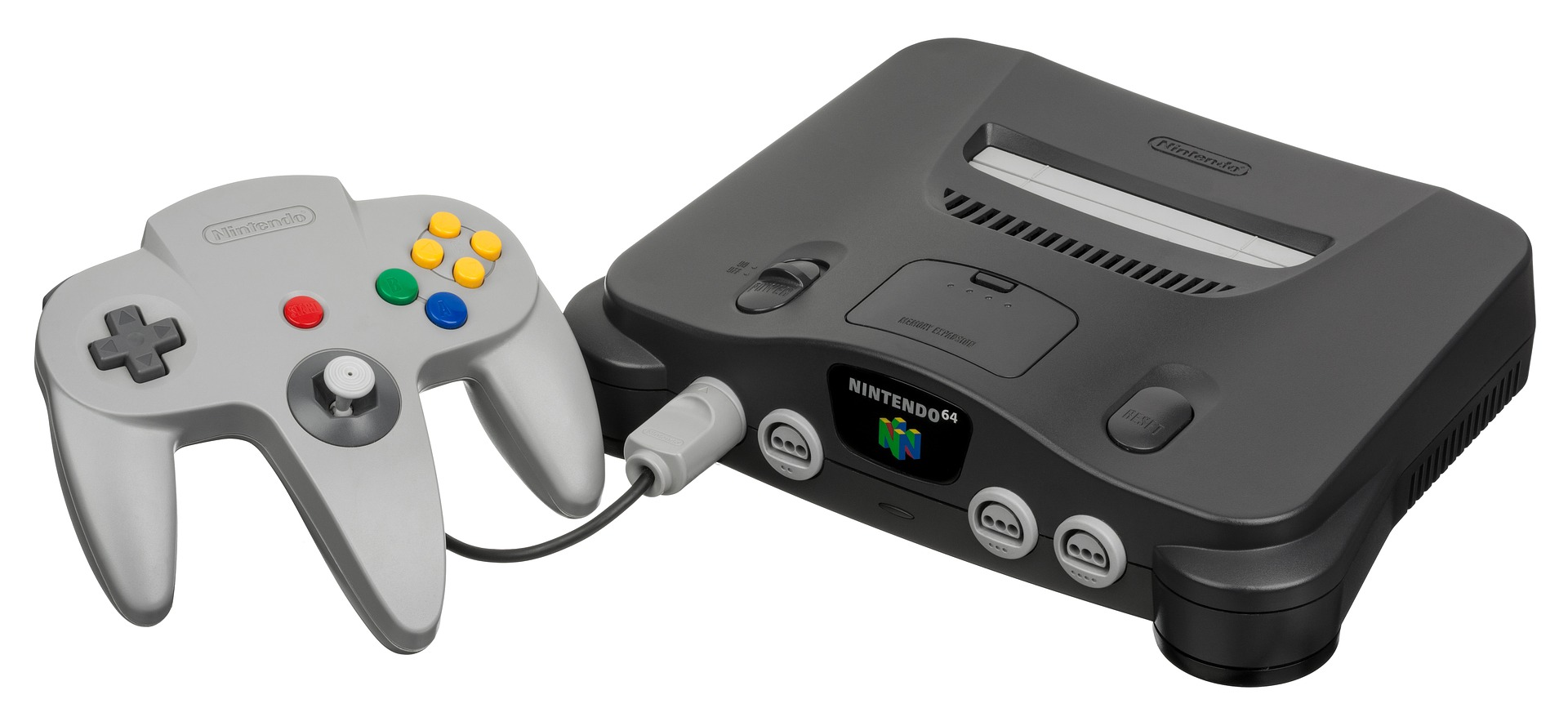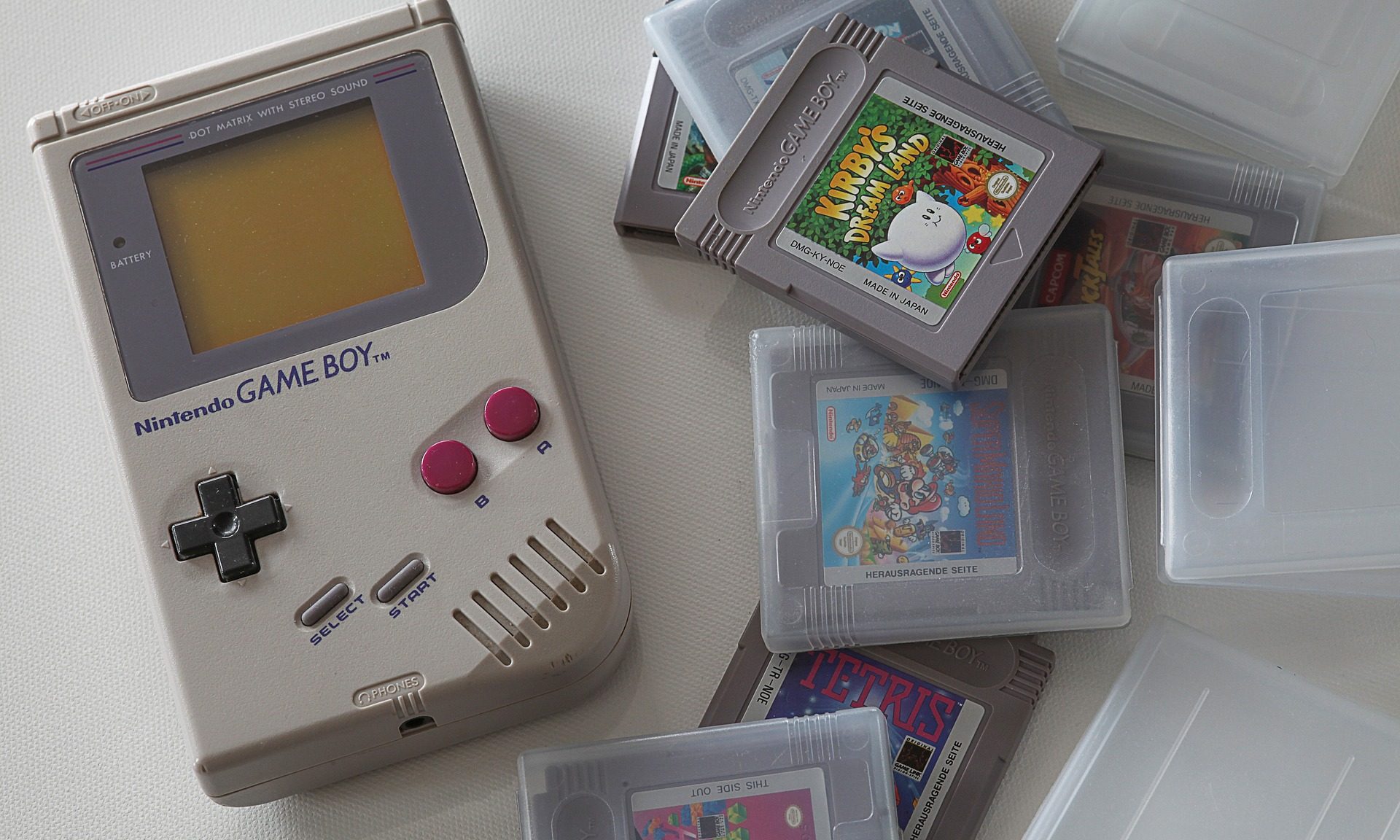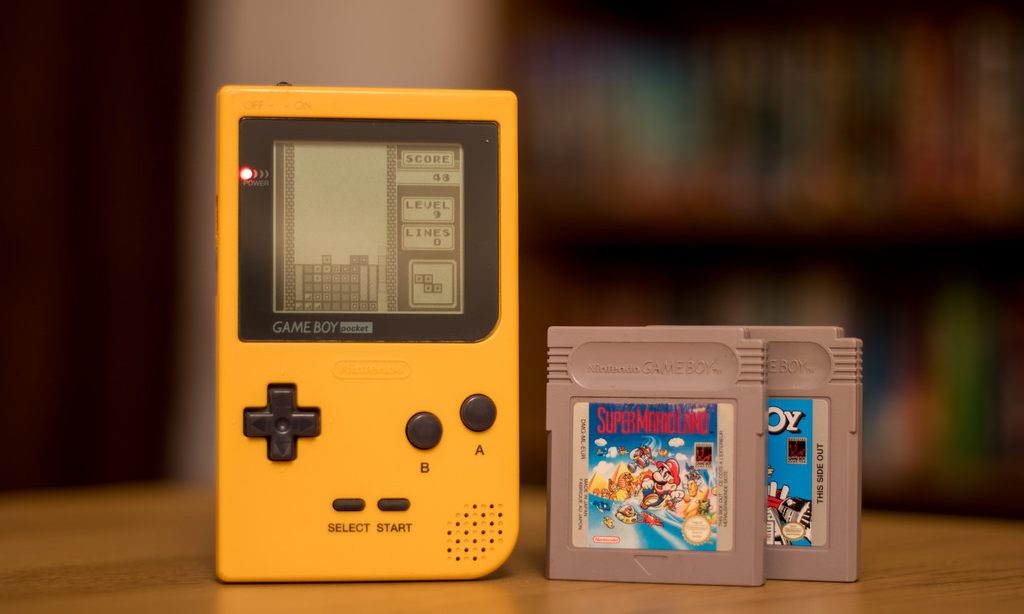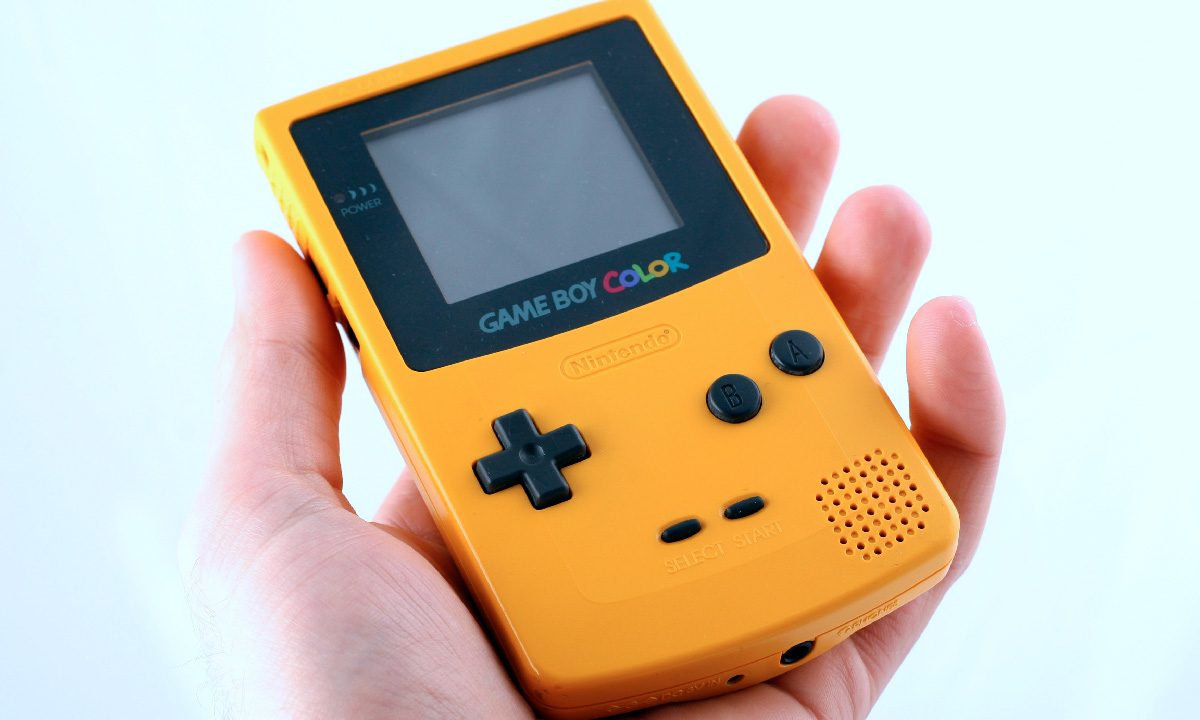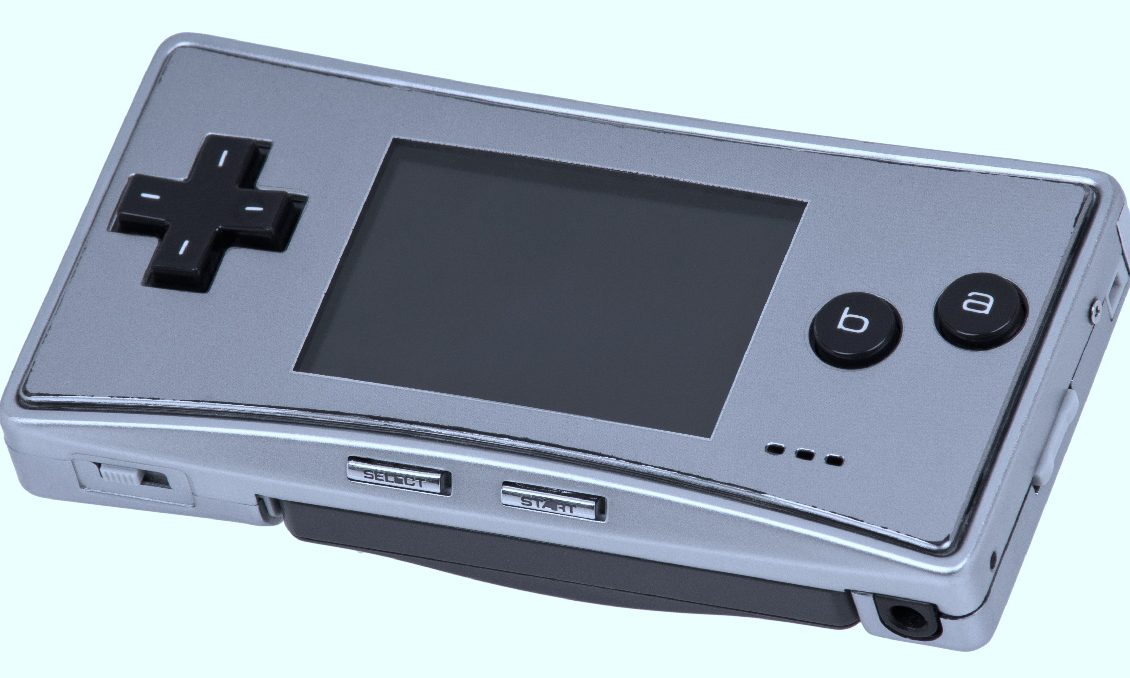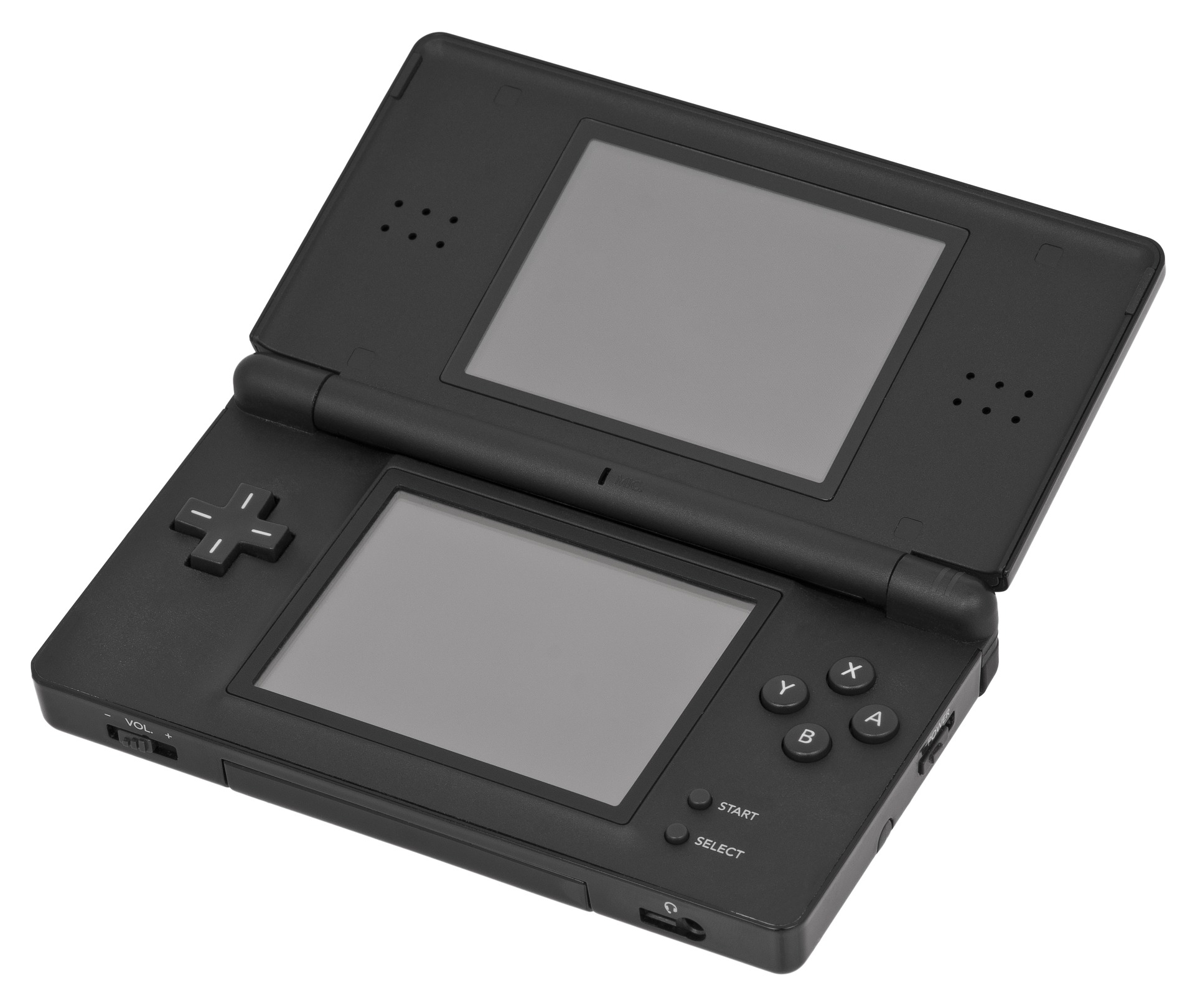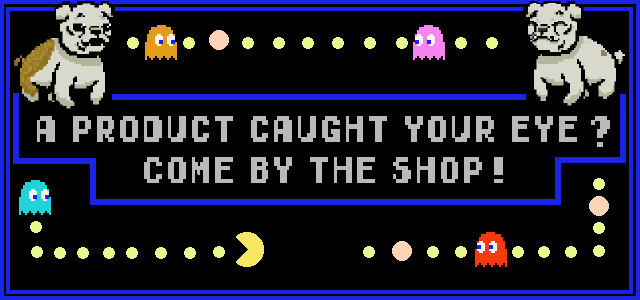
Some of the best Nintendo consoles
Here is a list of some of the consoles that were key players in the history of Nintendo, and in the history of retrogaming in general.
The Game & Watch
The Game & Watch is one of the first pocket game console of the world! The youngest of us were not even born yet and will not remember, but these little wonders have saved from boredom millions of people for over ten years. The idea? A gaming console, a single game, like a Gameboy, which would be stuck with a game cartridge of Pacman.
Launched in 1980 by the well-known company Nintendo, the gaming machine will be produced until 1991. No less than 43.4 million units have been sold across the globe. There are 59 different models and 11 production series.
It is Gumpei Yokoi, the creator of the widely known Gameboy, who was at the origin of the Game & Watch. His idea came up on a trip, he was looking at ways to entertain businesspersons who played a lot on their calculator and were not lucky enough to have Candy crush with them.
Businesspersons game console?
The console just launched, a finding quickly appears, and buyers are rather children. Therefore, Game & Watch focus on the child universe and features more colourful designs and graphics, superheroes start to appear like Donkey Kong the powerful king of the jungle or Mario the brave. (whose name was “Jump Man” at that time).
The different series of Game & Watch
- The Silver or Gold Edition (1980-1981)
- The Widescreen (1982)
- The Multiscreen (1983-1989)
- The TableTop (1983)
- The Panorama (1983-84)
- The New Widescreen (1982-1991)
- The Supercolor (1984)
- The Micro vs System (1984)
- The Crystal Screen (1986)
- The Mini Classics (1998)
 Did you know ?
Did you know ?  Next
Next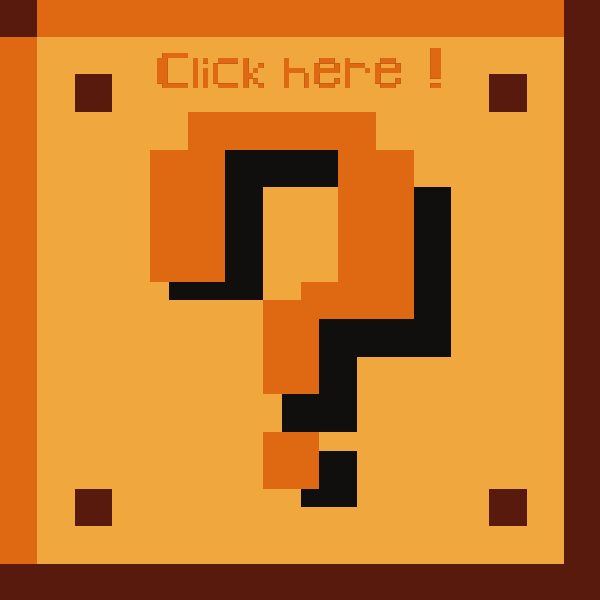
1
The Nintendo 3DS takes over almost the whole design of the Game & Watch multi-screen.
2
There is a Game&Watch Collection on the Nintendo DS where one can play Donkey Kong A and B, but you need to be a member of the European, American or Japanese Nintendo club, and also spend about 5000 points!
3
A monochrome character named Mr Game & Watch was created in Super Smash Bros Melee. Its appearance reminds us the games of the console.
The Famicom / NES
The Famicom : the cheap and family home console
If the Famicom does not mark the birth of the Nintendo brand, it is undoubtedly the first console to place Nintendo on an international level.
The Famicon (diminutive of “Family computer”) was born July 15th, 1983 in Japan. This name was imagined by the designer’s wife Masayuki Uemura, who proposed an alternative to the original name: “GameCom” The Famicom was originally meant to be a powerful computer, with a keyboard and a disk drive. But Nintendo finally opted for something more classic.
Riding on the success of the Arcade games (Duck Hunt, Donkey Kong, Popeye,…), Nintendo wanted to build a home console, cost-effective and inexpensive. This is the reason why the controllers were directly wired to the console and could not be disconnected. Yet, probably to face their competitors, Nintendo added more or less wacky elements to its machine, like a microphone, built into one of the controllers (which could be used to influence the gameplay of some games).
Japan in the pocket
The first weeks after the release were difficult, due to malfunctions and repeating crashes. But after she was called back and Nintendo integrated a new motherboard, the success of the console was dazzling, it crushed all their rivals. At the end of 1984, the famicom had become the best selling console in Japan. But it is in 1985 that the console reached the top with the release of “Super Mario Bros”. The success was such that the game justified itself the purchase of the console. It was a “killer game”. End of 1985, after more than 2.5 machines sold, Nintendo became the most profitable company in Japan (even ahead of Toyota!). One out of three homes has a famicom under their TV. The japanese market is conquered.
Now, it is time to conquer the world.
The NES : the conquest of a world suffering from the “crash”
Following the success of the Famicom in Japan, Nintendo presented the american version of the machine in June 1985 at the Consumer Electronics Show: “The NES” The Nes was supposed to be named “Nintendo Advanced Video System (AVS)”, with wireless accessories (controllers, laser gun, external,…). It was supposed to work with infrared, a revolutionary technology for the time. But there was a problem: The video game krach destroyed the american market due to consoles like the Atari 2600 and those games that could be created by anyone who knew how to program one, if he was linked to the firm or not. The american market was overwhelmed with a crazy amount of games, often bad and unsaleable. The clients but also the providers reluctant to any type of console. The video game market, as you’ve understood, was really bad at this time. They had to be careful before the release.
The release of “Super Mario Bros.” and the end of the Crash
This is the reason why the design of the NES is sooo different from the original Famicom! The Famicom looked too much like the old traditional machines. Masayuki Uemura, the NES designer, had to get away from the Famicom’s design and find a more suitable design that would made it popular despite the crisis. And what was popular at this time in the US ? Video cassette recorders ! The cassettes were loaded in the front (like a VCR), square and imposing, gray white and black colors. More “grown-up”, the VCR style of the NES had nothing more to do with the japanese one. This great idea made the NES a success. It was so amazing that the US went out of the krach after its release, especially thanks to the Duck Hunt + Super Mario Bros pack, delievered with the “Zapper”, a photosensitive gun, really popular in the us !
The NES will take a few years more to arrive in other countries, for many reasons. In France for example, it will not arrive unter 1987, at the same time as the Sega Master System because of a late delivery by boat. Nintendo is now the undisputed leader of video games and will continue to be so for many years…
Until the release of the “Super Nintendo” in 1990 (1992 in France.)

The red and white color of the hull would come from a billboard that Hiroshi Yamauchi saw while walking in town. The design of the joysticks was inspired by Game and Watch: square with a directional cross. |
The Super Famicom / Super NES
The Super NES is an AMAZING console. Tell someone about “Super Metroïd”, “Super Mario World”, “Secret of Mana” and so many others great games…You can be sure he will directly be nostalgic ! Let’s talk a little bit more about it !
Super Famicom, Nintendo’s 16-bit counterattack
Obviously, the Super Famicom was born in Japan in 1990. Compared to the Famicom, the Super Famicom has better graphics (16-bits), new controllers, a better sound and more features.
But wait…1990? The PC Engine was already on the market since 1987, no ? And the Sega’s Mega drive since 1988 !
YEEES you’re right! If Nintendo took more than 3years to release a new console, it’s just because they were always leaders on the internal market, even tough there performances were lower than their competitors (8-Bits for Nintento, 16-bits for Sega and Nec). But once they lost market share, it was time to react!
This is when the Super Famicom is born. The success is immediate and the first shipement of 300.000 consoles is liquidated in a few hours !
The Mega Drive (Genesis), the eternal rival
It is strange to imagine, but the Super Famicom took an advantage from something the Nes never had: a real competition with one rival: the Sega Genesis. It is undoubtedly thanks to this competition that the SNES was able to bring out such a diverse range of games and pushed always the performances of the machine, especially with the use of pre-rendered 3D-models, a complete revolution at the time !
An incredible amount of great game are released during this period. Some were spin-offs, mostly from the Mario serie, with Super Mario Kart or Super mario RPG (a title in collaboration with the giant Enix). It is also at this time That the characters from Mario’s world became the heroes of their own world: for example Yoshi’s Island or Donkey Kong Country. But a lot of new games, new universes and new characters were also created at that time, like Star fox, Chrono Trigger and so on !
The SNES was an big success with more than 49 million consoles sold worldwide. Even if it is less than the NES (with 62 millions machines), the SNES was still the most sold console of its generation.
|
The beginnings of the console was so good that they attracted the attention of the Yakuza in Japan, who began to steal the console cargos. After that, Nintendo decided to make the shipment by night in order to avoid robberies. It even seemed that the enthusiasm caused by the SNES release, made so many people go out on the street by foot or by car, that it was a real chaos on the street. Even the Japanese Government asked Nintendo to release their next consoles on weekends. |
The Nintendo 64
The Nintendo 64… best console of all time for some, a faux pas of Nintendo for others… The opinions about this console, that nevertheless holds some absolutely fantastic games such as Zelda: Ocarina of time or Super Mario 64, are rather divided.
Why? Let’s see this together.
The “Nintendo Ultra 64”: an ambitious project
The year is 1993. The Super NES still dominates the console market, far before Sega’s MegaDrive. But Mr. Yamauchi, the director of Nintendo, is always aiming higher: he collaborates with Sony to develop a CD player for the Super Nintendo! But this alliance will not last long, since Sony proved to be too greedy. It was after this aborted project that Sony began the development of its “Playstation“, and Sega its “Saturn“, two 32-bitsconsoles (against the 16-bits Super NES).
But Mr. Yamauchi does not lose faith: he joins forces with the “Sillicon Graphics Industry“, a reference in the field of 3D animation which is also behind the special effects of the film “Jurassic Park” in order to develop with their powerful SGI stations not a mere 32-bits, but a 64-bits console !!! Really ! So a console twice as powerful as the competition, called at the time “Nintendo Ultra 64“, and for only 250 dollars!
The “Donkey Kong Country” revolution
When Nintendo unveiled the console for the first time in 1994, its elegant black curves and especially its 4 ports of controller (no need of the Multitap anymore!) hit the public right in the heart. But the cassette holder immediately put a damper on the whole thing. With the Playstation and the Saturn launching games on CD, the 64 looks a bit like a relic of an old time: players and experts believe that in terms of memory a cartridge is less performant than a CD, to which Nintendo retorts that with cartridges, there is no loading time, thus greatly improving the gaming experience.
After this first impression, the public’s opinion is rather mixed. Nintendo had to repair the damage by showing what its partner, Sillicon Graphics Industry, is made of: thus, the legendary “Donkey Kong Country” on Super NES is released in 1994, featuring revolutionary graphics created by converting 3D sprites into 2D sprites and adding an impression of volume and relief. “This is just a foretaste of what the Nintendo Ultra 64 will look like!” said Mr. Yamauchi to the fans, more and more exited.
A mixed success
But the Nintendo 64 is falling behind, and its two competitors both come out in late 1994 in Japan and mid-95 in the rest of the world. Nintendo, not wanting to be forgotten, keeps denigrating the Playstation and the Saturn by calling them “old-fashioned 32-bit stuff“, and after an aggressive Nintendo advertising campaign during Christmas 1995 going like: “If you really want to cry in a few months, demand a 32-bit console for Christmas”, Nintendo finally releases its console, eventually renamed “Nintendo 64“, in 1996 in Japan and the USA and in 1997 in Europe.
It sells like hotcakes the first few weeks, but sales quickly stagnate, for several reasons: The Playstation and the Saturn are already well established in the market and already have the affection of the public. SquareSoft, the developers of the series Final Fantasy, abandons Nintendo (ouch!). Cartridge games are very expensive (about 67 € against 45 € the two other consoles in CD format) and especially, they are too long and difficult to program, which will result in a game library much less varied than its competitors, especially the one of the Playstation.
But an exceptional game library
However, the 64 was still very good thanks to the consecutive release of several legendary games like Goldeneye 007, Banjo & Kazooie and Lylat Wars (sold with the “rumble pack”, which makes the controller vibrate) in 1997, and especially … ESPECIALLLY: in 1998, with the release of The Legend of Zelda: Ocarina of Time, which smashes ALL sales records with more than 6 million copies sold in just two weeks.
Other hits, such as Perfect Dark or Super Smash Bros, released very late in 2000, the year of release of the Playstation 2, allowed the 64-bit console to survive two more years in the new era of the 128-bits (thus facing the PS2 and the Xbox of Microsoft), before retiring permanently in 2002, one year after Nintendo released its GameCube.
In brief, the Nintendo 64 is a half-success: with about 33 million units sold, it sold less than the Playstation (104 million) but better than the Saturn (9.5 million). It suffered from a catalog of games less varied than that of the PlayStation… but what a catalog! With mythical titles such as The Legend of Zelda: Ocarina of Time, Goldeneye 007 and many others, the Nintendo 64 is a fantastic machine and is undoubtedly one of the best consoles of all time.
The GameCube
The GameCube was released in May 2002 in Europe. It follows the release of the Nintendo 64.
The GameCube : a portable home console ?!
Easily transportable, it’s the most compact of the 128-bits consoles of its generation (compared to Microsoft’s huge Xbox and Sony’s Playstation 2) and has a transport handle. It’s second surprising feature is its controllers’ design. Nintendo already surprised gamers with the Nintendo 64, and does it again by creating controllers rather unsettling at first, but comfortable and ergonomic in the long run. It’s also the first Nintendo console to use CDs, or rather, “Micro-CDs”, that can only contain 1.5Go of data, but reduce a lot loading time.
A not-very-favourable market for the console
In spite of all those assets and its low price (200€ in Europe againt 450€ for the PS2 and 480€ for the Xbox), the Nintendo 64’s semi-failure tarnishes Nintendo’s Brand image, and the players fear that what had happened with the 64, namely the lack of games, repeats itself with the GameCube…And after the players, it is the external game editors, more and more sceptic, who abandon Nintendo, thus creating a rather shallow game library. And with the Playstation 2, which is still today the highest-sold console of all time, and was on the market a year before, the competition was too tough.
Fantastic games
However, despite this mild success, the GameCube possesses an asset that, as for me, makes all its weak spots disapear: this console possesses absolutely fantastic games. I think no game made me laugh as much as Mario Kart: Double Dash did, it was THE game of all the week-ends I spent with my friends. And the atmosphere emanating from Metroïd Prime, or the fantastic story of Zelda: Twilight Princess (and Wind Waker of course), or Pokemon Coloseum in which we could use and exchange objects and pokemon of the 5 games released on Game Boy Advance ! Nostalgia…
The GameCube will nonetheless sell about 22 millions copies worldwide. It is today a highly popular retrogaming article, for its low price and for the entertainment it brought to so many players.
 Did you know ?
Did you know ?  Next
Next
1
You probably remember the sweet background music of the GameCube’s menu. By accelerating it 99 times, you will notice that it is in fact the Famicom Disk System’s music, but slowed down.
2
The original name for the GameCube was “Dolphin”. The name was changed to GameCube, but many references to the aquatic mammal have been hidden not only in the console itself, with a tiny dolphin picture on an electronic component of the console and its processor named “Flipper”, but also in its games, like Delphino’s island in Super Mario Sunshine, shaped like a dolphin.
The Gameboy(s)
In the exciting history of videogames, the legendary Gameboy is probably one of the most sensational. Here is its story.
Gameboy : when simplicity wins
We’re in 1989, the NES is dominating the videogame market and is already present all around the world. But, Gunpei Yokoi, the Game&Watch’s dad, aims higher: He wants to create a new console, light, cheap and sturdy, that you could take everywhere with you, not only in your house, but in the streets, at school, in the plane. Everywhere!
And this is how the 3rd most sold console of all time was born: the Gameboy.
The success was phenomenal. In only two weeks, 300 000consoles were sold in Japan. On the first day of the release in the USA, more than 40 000 Gameboys were sold!
But the most incredible thing in this story is that the Gameboy managed to impose its domination on the market, despite the presence of much more technically advanced consoles such as the Atari Lynx (developed by Epyx), released the same year, with 3d and colored graphics, or even the Sega’s Game Gear with a backlit screen ! Now, that’s the question: Where does this success come from ?
A success called “Tetris”
Tetris was included in the launch pack, instead of Mario Land, which was originally planned. Henk Rogers, the man who obtained the rights of the Tetris game for Nintendo (rights at the time owned by the Russian government), told Minoru Arakawa, president of Nintendo of America’s, that Tetris would reach the broadest audience he had ever seen. Tetris was a game for everyone, no matter the language, culture, age or sex. It would appeal the primary instinct of “putting in order” present in every human being. In other word: it would sell itself easily… Minoru Arakawa is convinced. Nintendo will finally put Tetris instead of Mario land. A wise choice that will lead Nintendo to success.
But, Tetris was not the only good game the Gameboy had to offer. Most of them were really fun and pleasant to play: Kirby’s Dream Land (1992) or The legend of Zelda: Link’s awakening (1993) for example.
Finally, compared to the GameGear or the Lynx, the game boy is lighter, with better components (the GameGear is well known for the fragility of its connector AC) and had a MUCH better autonomy! But, above all, it was much cheaper: 90$ for a Gameboy compared to 150$ for the Gamegear and 190$ for the Lynx.
The arrival of the Pocket and the Color
The Gameboy’s success is even growing further with the release of improved versions: First the Gameboy Pocket in 1996, a smaller version working with only 2 AAA batteries and with a better black and white screen, more fluid. Then, in 1998, the colored version of the Gameboy, obviously named the “Gameboy Color”. It was compatible with the normal Gameboy games. The game developers could now create colorful and more detailed universe !
But in 1998, the gameboy was already 9years old, a little bit too much in the videogame world! Nintendo needed something new to boost sales and popularity…A new revolution filled with “Thunder Punches” and “Mega Kicks”.
Yes…POKEMON!
Pokemon : a HUGE success
More than a game, Pokemon is a religion! Catch’em all, take them everywhere with you and change them with your friends using a cable link, the success of the first Pokemon Generation is monstrous. It is the starting point of a legend that still brings today billions to Nintendo.
But in 2001, the world had entered the 128-bit era with the Playstation2, the X-box and the Dreamcast. And compared to those brand new graphics, the Gameboy looked like a relic from the old times. Therefore, Nintendo decided to create something new and powerful too: the Gameboy Advance (GBA).
The Game Boy Advance (GBA) : a Mini-Super NES
Ahhhh, the GBA…What a console! Imagine playing the best NES games but on a portable machine! Yoshi’s Island, the Legend Of Zelda: A link to the Past, the 3 Donkey kong Country! Because, yes, the GBA was kind of a portable version of the NES! But not only was it offering the good old’games but also great new ones like: Zelda: Minish Cap, Final Fantasy Tactics Advance, Metroid Fusion and sooooo many more! And all of these made the GBA one of the best portable console ever! But even cooler: she is backward compatible with the GameBoy and the GameBoy Color. She also has a large screen (horizontal in the Game&Watch style) and is, for the first time, equipped with “L” and “R” triggers. The only thing that was really criticized was the lack of backlighting. But no worries! In 2003 Nintendo released the special GBA SP, with backlighting, a rechargeable battery and a very compact “clamshell” design (which made it really popular in the US, because clamshell phones were very trendy at that time).
Ring a bell ? Yes: the NES and its video recorder design! Good Job Nintendo!
Even if Nintendo abandonned the GBA in 2004 to focus on the Nintendo DS (in response to the arrival of Sony’s PSP), many great games were made, even years after the DS was released. The Pokemon Mystery Dungeon or Final Fantasy 6 for example.
Game Boy Micro : the shy little sister
Finally, the last member of the Gameboy family is the Gameboy micro, released in 2003. It is just a smaller version of the GBA, which was unfortunately, unsuccessful. First, because it was not compatible with the GameBoy’s game but also because the famous Nintendo DS is announced for the next year! With much better performances. But this is another successful chapter of Nintendo’s history.
 Did you know ?
Did you know ?  Next
Next
1
In 1994, the “Super Gameboy” is released. It is a cartridge-adapter for the SNES to play Gameboy games on your TV. This cartridge is actually a Gameboy, but without the screen and controls! All the components are the same. The reason behind this is that the SNES could not emulate Gameboy games.
2
During the first Gulf War, a Gameboy, belonging to an American soldier, survived the explosions after an air raid. The shell is completly calcined and melted, but the console still works! It is now exposed in the “Nintendo World Store” in New York!
3
The first Gameboy screen was green, because during the tests, the green was the color that contrasted the most effectively the colors in the LCD screen.
4
The Gameboy is not the first portable console in history: in 1979, the Microvision was released. It looks a bit like a Gameboy but does not use a directional pad but a roller control knob. But it was not a success due to the lack of games: only 12 in one year!
5
In 1998, the Gameboy Light was released in Japan. It looks like a Gameboy Pocket with only one change: it is backlighted! So, the first backlighted console in Nintendo’s history was not the GBA SP, but the Light!
The Nintendo DS
While we thought that no portable console could ever surpass the GameBoy’s success, Nintendo surprises everyone one more time with this amazing console who revolutionized the world of portable consoles.
The Nintendo DS : dual screen, dual fun
The Nintendo DS was released in 2005 (2004 in Japan and in the US) and this in a rather strained situation for Nintendo, suffering from the rather mild success of the GameCube. A situation so dire, that the president of the company, Hiroshi Yamauchi is rumored to have said: “If the DS is a success, we will rise to heaven, otherwise we will fall in hell”. But history showed us that Mr.Hiroshi did not have to worry so much: the DS is today the second highest-selling console of all time. After the classic Nintendo DS, other versions of the console were released, starting with the Nintendo DS Lite in 2006, slimmer and more elegant than the original one, but with the same functionalities.
The peculiarities of the DS were innovative at that time: the console has two screens, one of the is a touchscreen (the bottom one), creating a wider diversity of interactions and a deeper in-game immersion; an integrated microphone (much more useful than the one integrated in the Famicon’s controllers) and the installation of Wi-Fi, allowing the console to communicate with an other DS, without the need of a cable. Bye bye, Cable Link !
DS Lite, Dsi, DSiXL : slimmer or bigger ?
In 2009 (2008 in Japan), the DS changes a lot with the introduction of the Nintendo DSi. Even slimmer and with slightly larger screens, it is equipped with two digital cameras and an internal memory. It can also connect to an online shop called “DSiWare”, where DSi games and later, 3DS games can be bought an directly downloaded into the console. Only slight mishap, giving its slim design, the DSi was not retro-compatible with the Game Boy Advance’s games anymore, the slot needing too much space.
The last console of the Nintendo DS series is the DSi XL, the largest of all the previous DS. It is identical to the DSi, but has a better battery life, and larger speakers emitting a more powerful sound . This larger screen allowed people around the player to clearly see what was going on on the screen from any angle and thus participating to the game.
With more than 154 million units sold worldwide, the DS family has conquered the heart many people with a large game library, an original gameplay and interesting features, overall offering an optimal gaming experience, that will be reinforced with the introduction of the 3DS family.
 Did you know ?
Did you know ?  Next
Next
1
The Nintendo DS had many names. Satori Iwata, President of Nintendo, revealed during an interview that the name of the next portable console of the firm would be “Iris”, in reference to the japanese flower iris ensata. Also, the official Nintendo DS emulator of Nintendo on PC is called Ensata/Iris. The name of the console will then change to “Projet Nitro”, name that appears on the back of all the Nintendo DS units in three letters: “NTR”. Then, the name “City Boy” was suggested. Nintendo wanted to target a public more mature than the public of the Game Boy, the main target being young urban and dynamic teenagers. Eventually, its name changed in Nintendo DS, DS meaning both “Dual Screen” and “Developper’s System”.
2
The DS was not supposed to be such a lead product in the Nintendo consoles. It was meant to be a simple accessory console, to consolidate the sales of the GameCube and the Game Boy series. The Nintendo DS family eventually became the spearhead of the company and succeeded to the Game Boy family, that Nintendo completely stopped to produce.
3
The design of the Nintendo DS is largely inspired by the Nintendo Game&Watch’s design. The similarities between the white Nintendo DS lite and the Legend of Zelda version of the Game&Watch are particularly striking.
4
In 2005, two alpinists climbed Mt Everest, bringing with then several electronic devices, including a CB radio, a Dell portable computer, four Mp3 players and two Nintendo DS to kill time. Due to the extreme altitude, all the electronic devices broke down…except for the Nintendo DS, who continued to function very well.
